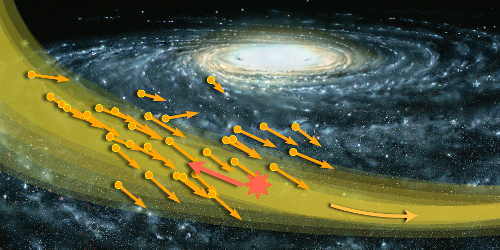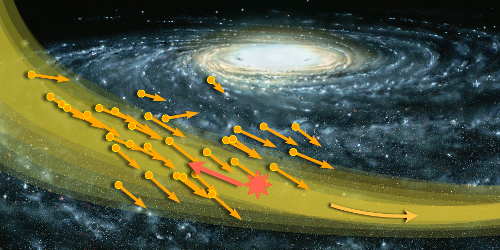Dark Matter Blowing Like a Hurricane
The cosmic weather forecast calls for strong dark matter winds in our region of the Galaxy. The prediction is based on a new study of a nearby collection of stars that are all moving in the same direction. This so-called S1 stream is believed to be the remnant of a dwarf galaxy that was swallowed by the Milky Way billions of years ago. The dark matter from this long-gone galaxy may be blowing past us at roughly 500 km/s, according to the study’s authors. Such a “dark matter hurricane” might leave a detectable imprint in data from dark matter searches.
The S1 stream was identified last year in an ongoing billion-star survey by the Gaia satellite. This is not the first stellar stream—in fact, astronomers have previously detected around 30 of these moving throngs in our Galaxy. The accepted understanding is that each of these streams is the debris of a small galaxy that crashed into the Milky Way.
The unique interest in S1 stems from the fact that its path crosses that of the Sun. Ciaran O'Hare from the University of Zaragoza, Spain, and colleagues calculated the effect of S1 on the dark matter in our region. The team considered different models for the density and distribution of the inflowing dark matter from the S1 progenitor galaxy. They then predicted possible signatures of this fast-moving population in searches for dark matter. Current detectors looking for weakly interacting massive particles (WIMPs)—one widely discussed form of dark matter—probably won’t see any effect from S1, but future WIMP detectors might. The chances are better for axion detectors, as the energy spectrum from axionic dark matter should exhibit a broad bump with an additional narrow peak if the S1 hurricane is truly buffeting our shores.
This research is published in Physical Review D.
–Michael Schirber
Michael Schirber is a Corresponding Editor for Physics based in Lyon, France.





